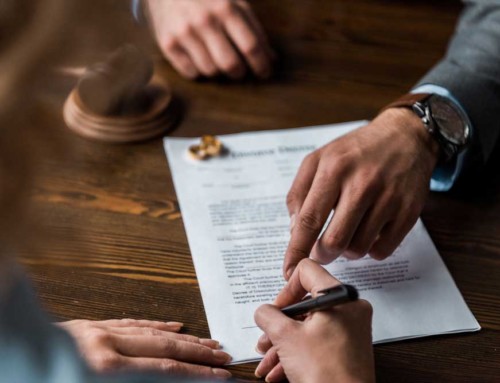 In my previous blog we discussed whether or not a mediator is required to screen for domestic violence and determined that it was indeed required by the Model Standards. We now turn to what the mediator should do under these standards if he/she determines that domestic violence does exist.
In my previous blog we discussed whether or not a mediator is required to screen for domestic violence and determined that it was indeed required by the Model Standards. We now turn to what the mediator should do under these standards if he/she determines that domestic violence does exist.
Standard X(D) contains six measures that a mediator should consider in order to “insure the safety” of the participants and the mediator.
They include:
- Establishing security arrangements
- Holding separate sessions
- Allowing a friend or advocate to attend the sessions
- Encouraging the participants to be represented by an attorney during the process
- Referring them to appropriate community resources
- If necessary, suspending or terminating the mediation.
Note that these measures do not mandate suspending or terminating the mediation. That is listed as the last step and seems only to be required when none of the other steps work. But how does the mediator know if the process is working? What if the victim wants none of the first five measures and simply agrees to whatever the abuser wants?
As my friend Lenard Marlow says in the Spring 2011 issue of Family Mediation news, a publication of the Association for Conflict Resolution, the victim may be prepared to “leave with just the shirt off her back…just to be rid of her abusive husband. It may be the healthiest decision that she has ever made in her life. And, she can live with it.” Out of concern for her future, are we to tell her that we can’t (or won’t) help because we don’t believe leaving with only the shirt on her back is in her best interest!
Another writer, in that same issue of Family Mediation News, suggests that the mediator should refer the victim “to a strong attorney who is well versed in domestic violence.” That may be sound advice, but where will she find such an attorney? Who is going to pay for that attorney if she is without sufficient resources? And what protection will that attorney provide if, in the middle of the night, the abuser comes calling?
If mediation is really about self-determination, shouldn’t we allow a victim the choice to leave a bad marriage even if we do not believe the agreement is in her best financial interest? Before we create or subscribe to rules that may sound good and are clearly well-intended, let’s be sure we have a thoughtful conversation about how they will work in reality. Otherwise we are only paying lip service to a concept that, while it may make us feel good, does no real good for the victim.
Feel free to ask any questions, to comment, or to request more information in the Comments Box below. Also, please forward this blog to anyone you know who would be interested in its topic.
Share with Friends:
Need More Information?
To schedule a free phone or video consultation, complete and submit the form below, email us at [email protected], or call 518-529-5200.






Hi there – and many thanks for both of these discussions on mediation and domestic violence. I was the person who had asked about this a few months ago, and I am so appreciative that you provided all of this information and these guidelines. Domestic violence is such a challenge and it is so good to know that there are screenings and standards happening around mediation, since so many judges will still “mandate” couples to settle out of court and/or come to an agreement using this remedy. I liked very much what you quoted about the concept of victim self-determination — the right of every human being, DV victim or not, to make decisions in his/her own best interest. I think as human beings in helping professions, we find it nearly impossible not to want to intervene when we believe a DV victim is making a decision that, to us, looks unwise or unsafe. It’s hard to remember that all we can know is what we see in front of us, and even then, abusers can give victims certain “looks” or signals, even in a mediation session (or a therapy session, or in court) to shut victims down, or threaten/intimidate them into silence or dishonesty out of fear for their safety. I think it’s a real testament to the legal profession that this has been addressed in such depth and that as many guidelines as possible have been applied to handling these cases when they come before us. And I really appreciate the ongoing dialogue about it here.
Thank you –
Heather
My sense is that there is a continuum of potential responses.
If the abused is willing to give up “everything” to get out, there is an argument that the decision is made under duress, which could potentially unsettle the agreement later. Or, “everything” may be a lot, in which case a lawyer could be willing to help the DV victim from the outset, especially given the relatively new rules presumptively requiring the monied spouse to pay for the non-monied spouse’s attorney during a divorce action.
The worst case scenario is perhaps where there is no money to be shared by the victim and the abuser, such as where the couple is upside down financially. Then what to do? Many of those couples will not end up in mediation because they can’t pay for mediation. Assuming they can and do scrape up enough to pay for mediation, perhaps the victim’s giving up “everything” for the sake of physical security is a sensible, reasonable trade-off.
Though of course the issue can be complicated where children are involved. Are they at risk? Does giving up “everything” include substantial custody of the children? Maybe you’ll continue the thought-provoking dialogue along that vein, Dan.
Dan, thank you for starting this discussion and offering options other than terminating the mediation session when domestic violence is confirmed. The challenge about ‘self-determination’ in such cases for me is determining the mental state of the person seemingly “giving everything up”. Does the person feel powerless or empowered? In general, any of the first 5 options you identified deserves consideration all the time.. However, how can the mediator determine if the “giver upper” has a mindset of helplessness vs. taking charge? If the physically weaker is mentally strong and determined to change his/her quality of life, the mediator ‘s role might become one needing strong skills in strategic open- ended questioning, testing for understanding, affirming information, summarizing, triggering thought expansion, highlighting inconsistencies and validating paradigm shifts. Combined with reflection and paraphrasing employing these skills can allow the mediator to monitor continuously for signs of intimidation and submission as well as sustained atttitudinal parity.
Regarding judge referrals for mediation, another standard to which mediators adhere, in addition to self – determination, is mediation is voluntary. Hence, even when court mandated, mediators check in with the clients to verify each party is willing to engage in the process to resolve the issues. If all are not, the report to the court is that All parties appeared for mediation but an agreement was not reached. Such action affirms the mediator’s commitment to uphold clients’ rights to engage voluntarily and self-determine the right course of action for themselves.
I am so appreciative of your opening this discussion , Dan.
Dr. Bernie
Our statewide network of community mediation centers and the Unified Court System’s Office of ADR and Court Improvement Programs can provide additional resources for those with safety and ethical concerns about domestic violence and power imbalance in mediation. This network of public practitioners has extensive experience from many years of practice, from which has evolved a variety of policies, procedures and training. These best practices inform mediators and provides safeguards. You may also wish to look at some of the opinions issued by the Mediators Ethical Advisory Committee at. http://www.nycourts.gov/ip/adr/meac.shtml#Opinions
Mediators have a duty to consider these ethical and practical challenges, and to become more mindful about safety, self determination and quality of the process. This is one of many areas in which our public and private practitioners can engage and learn from one another.
Thank you, Dan, for opening this discussion. I am interested to hear from other mediators about how they are changing their practices and using new skills to address domestic violence.